It is relatively well-known that Albrecht Dürer's family was of Hungarian origin. Dürer's father, Albrecht Dürer Sr. was a goldsmith from Ajtós from where he emigrated to Nuremberg. Their family name conserved their roots, as it comes from the German word for door, "Tür", while their Hungarian name Ajtósi, contained the Hungarian word for door, ajtó.
The Dürer anniversary
However, what is less known is that the publisher of the Nuremberg Chronicle by Hartmann-Schedel, which contained the first authentic depiction of Buda, was Anton Koberger, Albrecht Dürer's godfather. The family connection may be the reason behind why the depiction of Buda is so detailed.
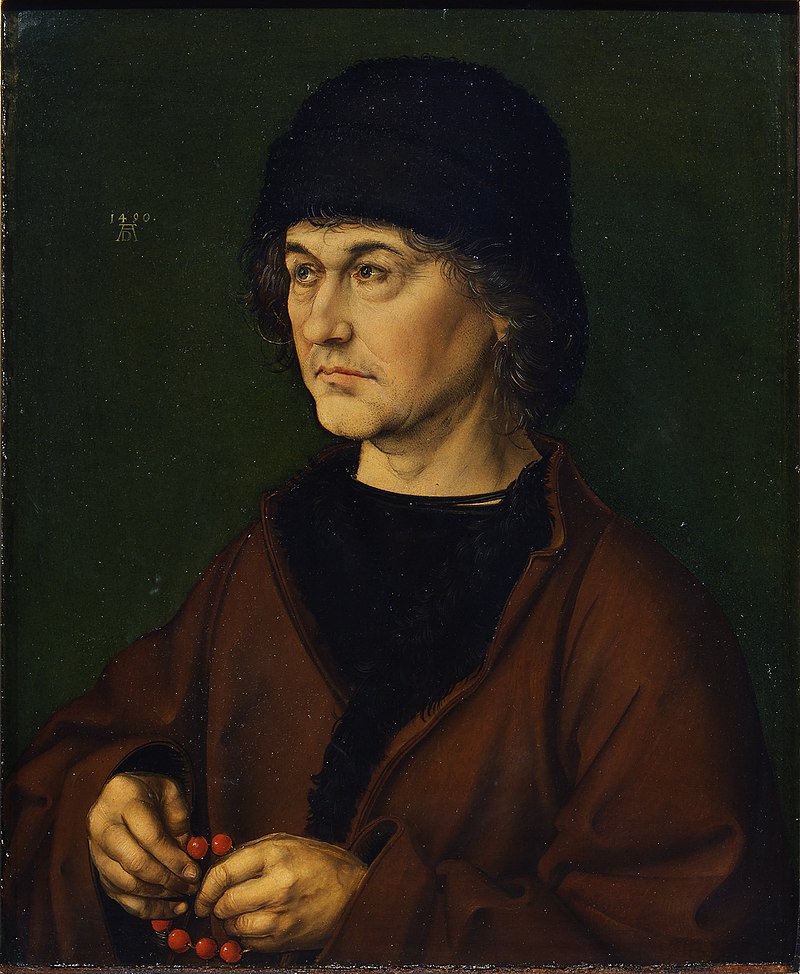
Albrecht Dürer painted the portrait of his Hungarian-born father in 1490. Florence Uffizi Gallery (Source: Wikipedia)
In 1928, on the 400th anniversary of Dürer's death, his Hungarian roots also gained new emphasis, not only in Hungary but in the Bavarian city of Nuremberg. The mayor of the city, dr. Hermann Luppe visited Budapest and Gyula, participated in memorials in both cities, and was elected an honorary citizen of Gyula. The Pesti Hírlap daily introduced the mayor as follows on 31 October 1928:
It would be almost impossible to paint a fitting portrait of Mayor Luppe. However, the most important point, for us at least, can be summarised in a few words: he likes Hungarians. Honestly, he finds no difficulty in promoting Hungarian interests.
Dr Hermann Luppe, Mayor of Nuremberg between 1920 and 1933 (Source: Pesti Hírlap, 27 February 1929)
This quote highlights an interesting point. For isolated post-Trianon Hungary, such diplomatic relations were especially important. At the same time, similar cultural events may have also been a welcome distraction in the death throws of the Weimar Republic, as well.
Luppe was mayor of Nuremberg between 1920 and 1933. As a founding member of the liberal German Democratic Party (DDP). He was forced to resign when Hitler came to power in 1933. He retired from public life and moved to Berlin. In 1939 he returned to his home town, Kiel, where he died in a bombing raid in 1945.
Week of Hungarian Culture in Nuremberg
Luppe's trip to Hungary in 1928 brought unexpected returns. A Week of Hungarian Culture was organised n Nuremberg in 1929. The contemporary press reported enthusiastically of the event, as seen in the 24 January 1929 issue of Új Barázda:
"Nuremberg welcomed its Hungarian guests with great love and enthusiasm. The entirety of the Bavarian press greeted the representatives of Hungarian culture with warm words. The exhibition of Hungarian fine art is already a great success since its opening on Saturday. Hungarian musical events will begin next week. The Nuremberg Theatre will present Dohnányi Ernő's opera entitled Tenor, while the orchestra of the Hungarian Royal Opera House will perform Poldini's Wedding in Carnival Time and Puccini's Turandot. The Hungarian Philharmonics will play a collection of the greatest works of Hungarian music. The ancient Bavarian city – with the richest and most interesting History in all of Germany – will play host to Hungarian culture for an entire week. The event showcases the greatness and value of Hungarian culture, despite the hell of Hungarians betrayed and ransacked by Trianon."
The event was the first time the Opera performed abroad. The Hungarian organiser of the event was primarily the architect Róbert K. Kertész, the Deputy Under-Secretary of the Ministry of Culture. Jenő Berczel, deputy mayor, represented Budapest at the event. Naturally, the event was addressed at the highest levels, and in his telegram to the mayor of Nuremberg, Kúnó Klebelsberg, Minister of Religion and Education, wrote of how the event could be continued:
"... I hope I will soon have the chance to welcome German art, which is so respected and well-understood here, to the Hungarian capital."
Bavarian Guests at the Nuremberg Week in Budapest
Accordingly, a Nuremberg Week was organized in Budapest the same year. In November 1929, a 550-strong delegation visited Budapest Nuremberg. A contemporary newsreel recorded the guests laying wreaths on Hero's Square. Hermann Luppe was a member of the delegation, as was Franz Goldenberger, the Bavarian Minister of Culture. Lord Mayor of Budapest, Ferenc Ripka, welcomed the guests at a general assembly of the capital's Council.
The Madonna of Nuremberg statue that first left the Bavarian city to be displayed in Budapest (Source: Picture Supplement of the Magyarság periodical, 24 November 1929)
One of the most impressive events of the week was the exhibition of fine and applied arts. The material from Nuremberg was filled with significant works such as the Nuremberg Madonna, the statue which had never left Nuremberg before and several paintings by Albrecht Dürer. Several delegates spoke at the opening, including Jenő Berczel, Deputy Mayor and Hans von Schoen, a member of the German delegation, and Franz Goldenberger.
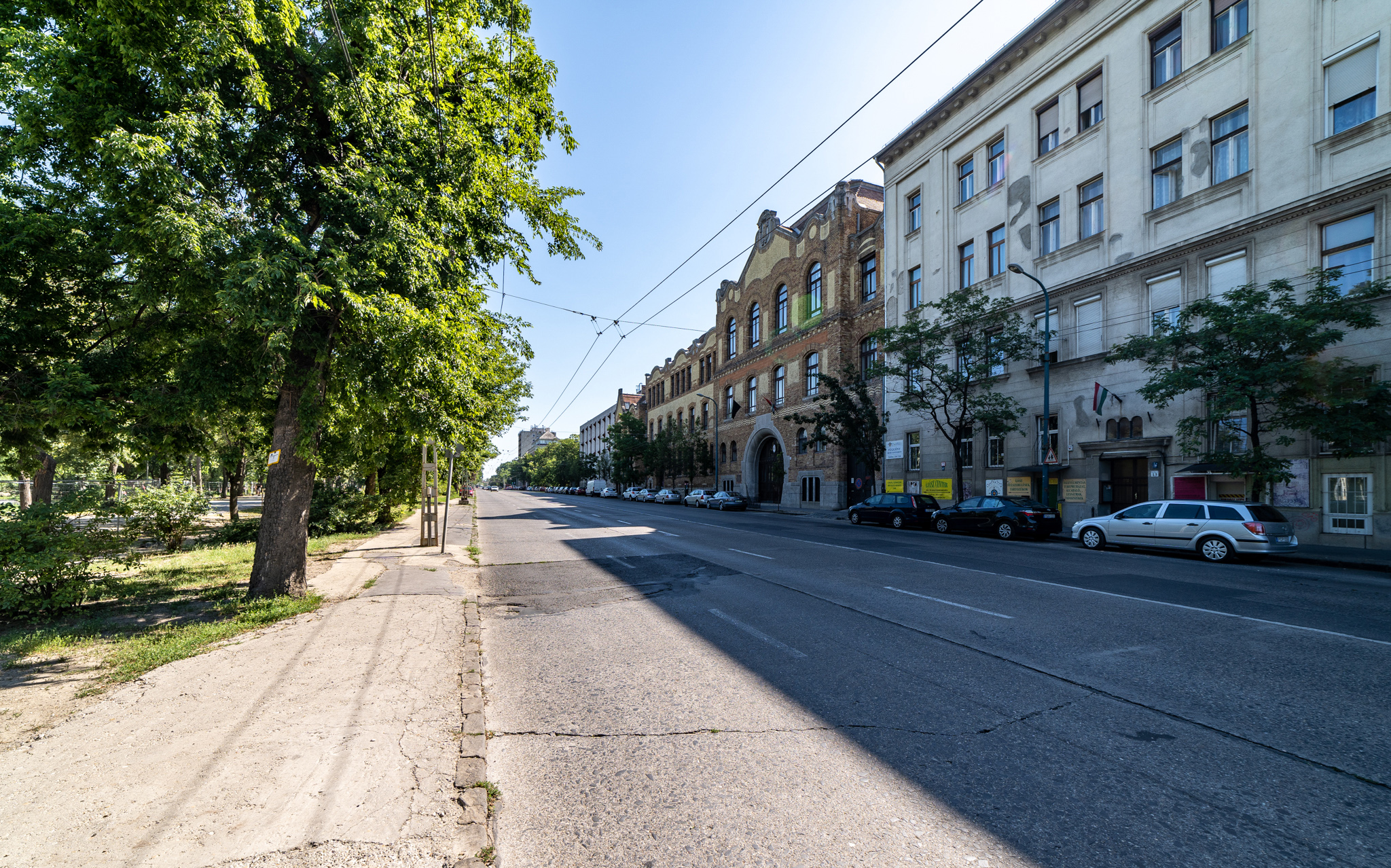
The section of István Road next to city park was renamed after Dürer in November 1929. Present-day Ajtósi Dürer Way (Photo: Balázs Both/pestbuad.hu)
Nuremberg's gift to Budapest
At the opening, Mayor Luppe announced that Nuremberg would be gifting the bronze statue of the walking woman to Budapest. he also handed Kúnó Klebelsberg a chalice. The lidded chalice from 1621 was a gift to the Hungarian Government.
Statue of the walking woman, by Johannes Müller from Nuremberg (Source: Picture supplement of the magyarság periodical, 9 October 1932)
Klebelsberg also gave a speech, in which Dürer was played centre stage:
"The Dürer family wears a door in its coat of arms. In their homeland, they bore the name Ajtósi, which is Türer or Dürer in German. From that coat of arms, a great gate has been born, through which Nuremberg and Hungary now connect.
Who was the creator of the Statue of the Walking Woman
One of the most interesting elements of the story is the statue of the Walking Woman. Contemporary sources and even Endre Liber's Statue and memorial plaques in Budapest lists the statue as the work of Hans Müller. However, there is no record of such a sculptor active at the time of the statue's creation in Nuremberg. There was, however, a Johannes Müller, who mainly created statues for buildings.
The mistake may be because the Viennese sculptor Hans Müller was much more well-known than his Nuremburger contemporary, so many articles did not differentiate the two. A few periodicals, such as Új nemzedék and Magyarság, listed the creator correctly as Johannes or Johann and even noted he was not only a sculptor but a painter. Johannes Müller was born in Nuremberg in 1879 and died there in 1937.
Hans Werthner: Portrait of Johannes Müller. The work was also exhibited in Budapest (Source: Picture supplement of the Magyarság periodical, 24 November 1929)
The "pipe-lady's" pipedream
The modern artwork seems to have surprised many in Budapest at the time. The Walking Woman was a rather divisive piece. The statue was often referred to as the pipe-lady. Its display in public, which the Nuremberger delegation would have expected, was postponed at length after 1929. An article in the 31 August 1932 issue of Magyarság details everything about how the statue was finally displayed:
"The capital recieved this strange, ultramodern statue as a gift from the city of Nuremberg. ... We were extremely happy with the lovely gift and placed it in storage at City Hall. The capital's Committee of Art and its leadership had a hard time coming to terms with the strange women, who is more reminiscent of pipes, than any human form. ... The statue lay almost forgotten for two years, until Mayor Luppe again visted Budapest, and inquired where the gift received from Nuremberg had been displayed. ... The question caused some concern, as the statue was fast asleep in storage. However, to ensure that such an awkward question could not be repeated the city administration decided to find a fitting location for the statue. The end of Gyopár Street on the southern slope of Gellért Hull was chosen because their is little traffic in the area. The statue was thus erected here, far from the hussle and bussle of the city, to satisfy conservative artists and the wishes of gift's givers. Thus the pipe-lady stands, and our firends from nuremberg can visit her if they wish.
The statue of the Walking Woman was erected in a park on Gellért hill (Source: Liber Endre: Statues and memorial plaques in Budapest)
The Gyopár Street mentioned above was a continuation of Minerva Street. Today, this section of road is a part of Minerva Street and runs into Verejték Street. The wooded, a supported hillside on the far-side of Verejték Street is where the statue once stood.
The statue only survived for thirteen years. In the tragic year of 1945, it too found its fate as a casualty of the war.
Ajtósi Dürer Way and Nürnbergi Street
The Nurnberg Renaissance” of 1928–1929 is thus only remembered in the street names after Albrecht Dürer next to City Park. The section of road was renamed in a resolution passed at a sitting of the Budapest Public Works Committee held in November 1929.
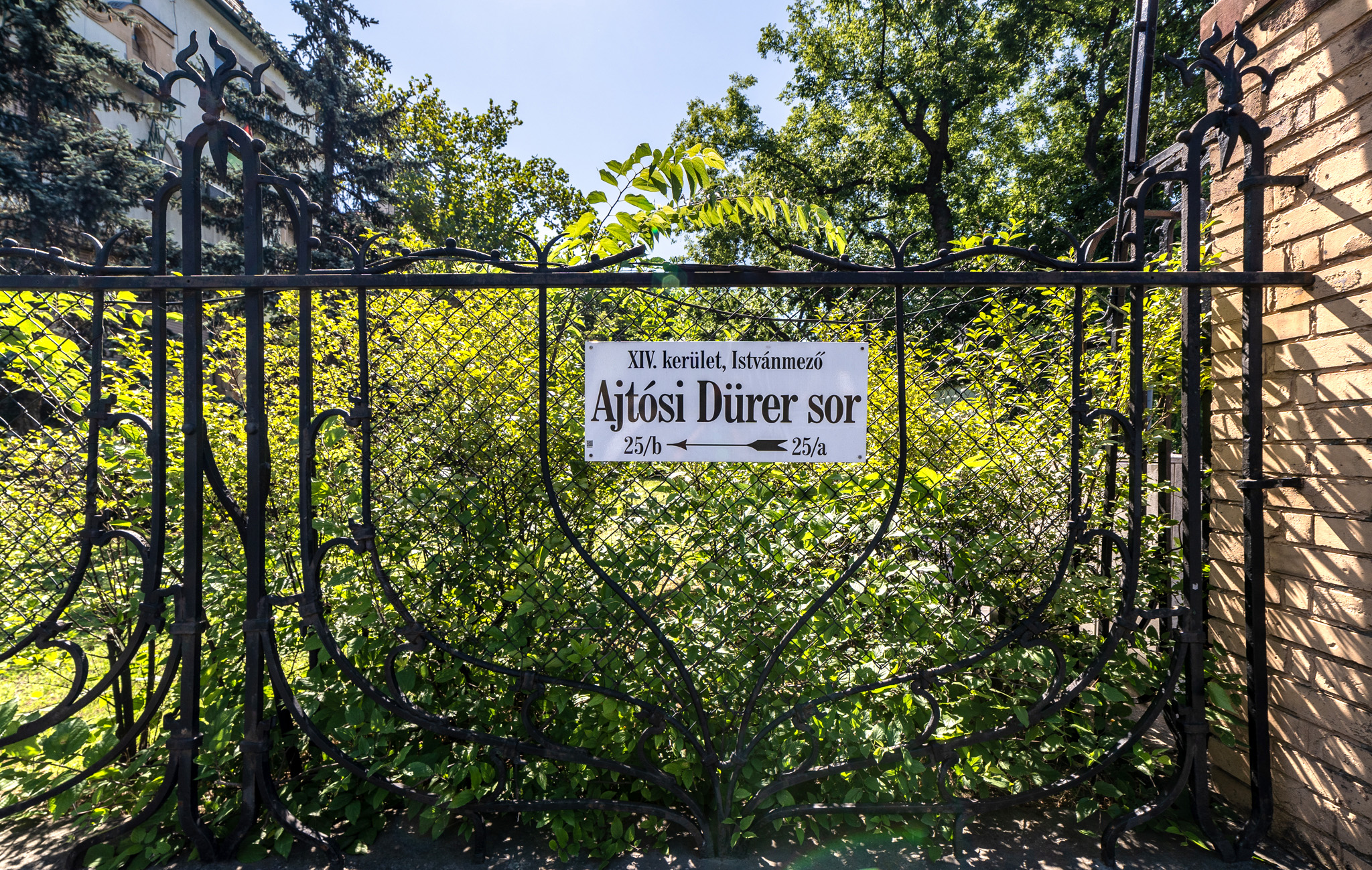
Ajtósi Dürer Way has borne Albrecht Dürer's name since 1929 in a form that refers to the painter's Hungarian roots (Photo: Balázs Both/pestbuda.hu)
Another street was also given a new name at the same time. Ilka Street in the 14th district was renamed Nürnbergi Street. However, following 1945 the city name held different meanings as well. Thus the street's name was returned to the original in 1951.
Cover photo: Artworks from Nuremberg on exhibition in Budapest from the Picture Supplement of the Magyarság Periodical. From the left: Albrecht Dürer: Portrait of Sigismund, Holy Roman Emperor and King of Hungary, Albrecht Dürer: Adoration of the Holy Trinity, Unknown: The Nuremberg Madonna (Source: The picture supplement of the Magyarság periodical, 24 November 1929)




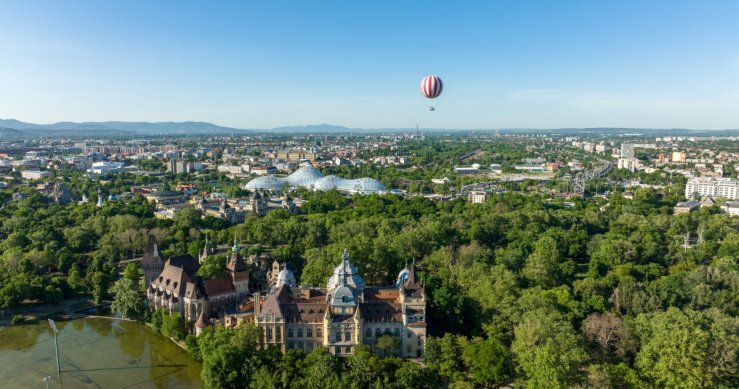
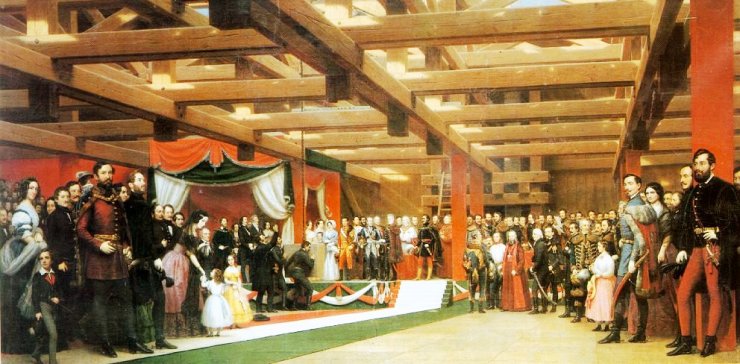

































Hozzászólások
Log in or register to comment!
Login Registration